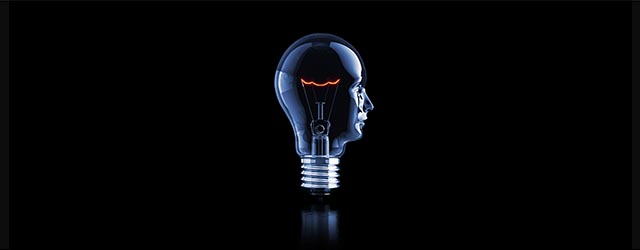Finance sector innovations have cut costs and improved convenience but have not been transformative. Will bankers and treasurers—traditionally risk-averse players—ever brainstorm a revolutionary breakthrough?

Table of Contents
Twenty-first century innovations in technology have brought improvements even in such a traditionally staid and stodgy field as banking. From the now-ancient invention of the retail ATM to the more recent development of “robo-advisers,” the financial industry currently enjoys unprecedented ability to move money and access information.
Yet so far, most changes—mobile/tablet solutions, biometrics for user authentication, multibank security tokens—represent new ways of doing the same old things. For global banks, lack of liquidity is stifling investment, and until that changes many banks will stay more focused on cost savings than on growth. Digital innovations have mostly focused on providing online channel sophistication and ease of use. Patricia Hines, a senior analyst of corporate banking at Celent, an IT research and consulting company for the financial services industry, says that most “innovation” in banking to date merely makes a manual process electronic rather than transforming it.

Andrew Doukanaris, CEO at Flotta Consulting, attributes the problem, in part, to fear of regulation. “Many corporate banks seem unable to modify what they currently offer both their SMEs (small and midsize enterprises) and larger corporate customers,” he says. “Whilst they may want to be more disruptive and agile, they appear to be held back by their internal compliance teams, who are quite rightly concerned with coming up against the regulator.”
Now, however, the stars may be aligning for significant change. A perfect storm of regulatory concerns, new competitors and growing client demands is brewing. These forces are ratcheting up the pressure to innovate—and not just with technology but with creative new products and processes. At the same time, financial technology—fintech—itself seems poised for a quantum leap, with API (application programming interfaces) and the blockchain showing particular promise for delivering meaningful advances.
Since the financial crisis, more stringent regulation has forced corporate treasury departments to adopt a more hands-on role in corporate activities and, in particular, risk mitigation. They have become far more demanding of their transaction banking partners.
“Corporate customers, just like everybody else, want flexibility,” says Doukanaris. “They want transparent and innovative solutions, and they want them yesterday.”
At the same time, competition between banks and the rise of multibank platforms have opened the doors to nonbank competitors, who approach innovation (and finance itself) with a different cultural mind-set that may give them an edge. ING, for example, is working to draw more nonbank firms into trade supply finance—with some success. Nick Weisfeld, co-head of data practice at GFT UK, says banks have been reaching out to leverage tech talent in other industries, and he sees a shift in attitudes.
“A lot more people at senior level within banks are talking about how to do things differently, in a new way,” he says. “Maybe a year ago I was less optimistic, but now we are seeing a lot more traction and lot more openness to new ideas and new ways of doing things.”
DEFINING INNOVATION AND MEETING DIFFERENT NEEDS

Earlier this year, Celent published a report on corporate digital channels stating that banks are investing increasing capital in technology incubators and accelerators for access to promising emerging technologies through venture operations. Barclays Accelerator, for example, launched an annual 13-week development program in New York and London for start-ups “with capability in machine learning, lending, digital banking solutions, trading, cybersecurity, data analytics, payments, cryptocurrency, insurance, wealth management and beyond.” Past “graduates” include Cashforce in New York and Everledger and Stockfuse in London. This year Barclays expanded the accelerator to Cape Town and Tel Aviv, which began their programs in April. Meanwhile, BNP Paribas is hosting its second hackathon June 17-19, where tech-savvy teams will attempt to solve problems identified by BNP. Successful teams move on to a digital boot camp, get support for development and a chance to demonstrate their solution—and, if they are lucky, a partnership with the bank to turn it into “a real solution that can change the face of banking.”
However, all these exciting efforts on the part of the banks do not tally with what their corporate clients believe innovation is about, according to Celent’s research. For clients, innovation isn’t about incubators, accelerators or hackathons. Innovation is about simplification—increasing usability, straight-through processing and digitalization. Accordingly, many corporations work out their own solutions.
“Because of the complexity of running a multifaceted global treasury operation, corporations often do much of their own technology heavy lifting,” says Celent’s Hines, who believes bank connectivity represents only one piece of a complex digital puzzle as corporates develop their own technology. “Many have an in-house bank structure or shared service center and are expanding into payment factories. Others are consolidating ERP [enterprise resource planning] systems and collapsing general ledgers. Still others are upgrading their treasury management systems to take advantage of Cloud-based solutions.”
Hines sees innovation opportunities for banks to offer improved services in information processing and transparency—increased visibility over cash flows and position, improved cash-flow forecasting and better risk management, for example. “Transaction services, foreign exchange and trade finance are geared toward liquidity and working capital management, with the corporate treasurer as a buyer. Banks serving large- to middle-market commercial customers want to win as much share-of-wallet as possible across these services,” she says. “Islamic finance, corporate finance and commercial lending are more closely tied together, with a goal of raising capital to fund a company’s operations.”

The focus of innovation efforts varies with size and sector. With large corporates, multibank reporting is via SWIFT and its competitor, Ebics, and bank concentrators, so they are likely to standardize on a global payments platform but lean on their primary transaction banks for more complex netting, intercompany lending and FX hedging, according to Celent’s analysis. Middle-market companies, on the other hand, have limited treasury and finance staff, and thus place more emphasis on ability to initiate and approve payments, manage exceptions and receive alerts on smartphones and tablets when they are working outside of their offices. SMEs, meanwhile, want simplified services that are scalable as they grow, not a “dumbed down,” rebranded retail online banking interface with limited cash management features.
High fees and a need for speed are causing corporates to be far more selective when choosing trade finance instruments. Electronic channels need to provide, on top of basic transaction services, instant access to advanced reporting, forecasting and simulation services. Ideally, they should be integrated with different transaction banking products, such as payments, foreign exchange, liquidity and cash management.
Corporations also seek technological innovations to manage currency risk. Steven Cunico, Deloitte Treasury and Capital Markets lead partner, warns that corporate treasurers are significantly challenged by the lack of visibility into their organization’s FX exposures. “If you can’t see it, you can’t manage it,” he says. “Without accurate measurement, value erosion from negative currency rate movements can’t be anticipated or prevented.”
To offer greater visibility, both banks and nonbank providers are creating suites of products to help corporations achieve real-time integration of different systems, as well as data quality and consistency from various sources. Corporates are also investing in treasury management systems (TMS) or a financial risk system to manage FX risk, as manually collecting data to quantify FX risk slows the analysis process and reduces the reliability of forecasts necessary to hedge effectively.
BIG CHANGES AHEAD
In the long term, blockchain holds the most promise across transaction banking for trade finance, supplier finance and cross-border payments use cases. A blockchain is a record, or ledger, of digital events that is shared, or distributed—hence the term “distributed ledger”—among different parties. It can only be updated by consensus of a majority of the participants in the system; and information, once entered, can never be erased.
“Blockchain separated from bitcoin could be a game changer,” states Doukanaris. “Blockchain does have the potential to have a huge impact, not least in the payments space, but it needs to be endorsed by government and by central banks, and there needs to be a standard.”
While bank interest in the blockchain is well publicized, as the race to stay ahead of more-agile fintech start-ups helps drive them forward, corporations are, in the main, keeping quiet about their interest in the technology. Those that are more vocal are generally technology-based companies, including disk drive manufacturer Seagate, which has both invested in the Ripple distributed ledger and is currently testing it to see if it can reduce wire transfer and FX fees, as well as enable Seagate to pay suppliers immediately in return for discounts in a supply chain that includes 10,000 suppliers and 100,000 invoices per month.
APIs also promise to aid innovation for both corporate banks and their corporate customers. An API (application programming interface) is a set of routines, protocols and tools for building software and applications. By eliminating IT barriers, APIs hold the key to unlocking legacy information and making it accessible via apps for mobile, Web and Cloud environments.
“APIs have the ability to sit across a bank’s information architecture and help by streamlining processes. One solution we own has helped a major European bank an average of 15 working days a month,” states Doukanaris. “The challenge is often to meet the right stakeholder in the bank who wants to make that change. In some instances there is fear that the digital revolution will result only in head-count reductions, rather than improved customer service and relationships.” Although APIs negate the need for costly mainframe rebuilding, they remain a big sell to banks.
“Going to a bank that’s been around for 100 years and saying, ‘We’ve only been around for two years, but we can do this,’ is not easy,” continues Doukanaris. “We need to earn their trust before they allow us anywhere near their systems.” He believes APIs will become mainstream only when banks and other financial institutions understand the cost savings and time savings and their potential to build new solutions and services.
“For corporates it comes down to hard-nosed pounds, dollars and euros,” observes Doukanaris. “It’s a commodity relationship now. Corporates want to transact online, in the Cloud through digital [tools] with an efficient interface, but I don’t think corporates push their banks enough, other than to provide security, money flows and to help them be tax-efficient.”
Doukanaris believes that, just as Kenya took a major lead in mobile payments, such developing nations as Indonesia and Vietnam, unburdened by finance baggage, may be ripe to introduce new, agile banking systems to facilitate innovation. “Developing nations don’t have the legacy systems,” he explains, “so it is easier to put in the most up-to-date technical solutions and the latest processes.”
Australia, Doukanaris says, is in many respects leading the way in Asia, with its innovation and creativity for corporate customers. In the West he sees the former state-owned and -governed banks in Greece as an example of banks that have gone through seismic change and are coming out the other end, where innovation will enable them to reduce costs—because they have had no choice.
Banks need to innovate to stand out from their competitors and grow their corporate customer base. They need innovation to provide advanced data and analytics, risk management, regulatory advisory services and flexible platforms with open architecture. The good news is, they’re working on it. “Some banks are further ahead than others,” says Nick Weisfeld of GFT UK. “But there are some good signs from where I sit.”



